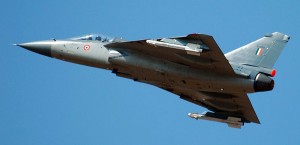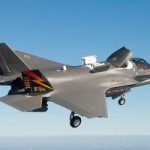Mark Antony, the Defence Minister appointed a high level committee to look into the performance of the Defence Research and Development Organisation (DRDO) laboratories. It was a timely decision. Recently a Parliamentary Committee passed strictures about the utterly unsatisfactory progress in the Light Combat Aircraft (LCA) development program being managed by ADA, one of DRDO’s constituent units. It is clear that the development of the LCA leaves much to be desired.
The LCA program was approved by the government in July 1983, (i.e.) almost 25 years ago. It’s envisaged development period before series production was to start, was about 12 years, with the estimated cost of development being about Rs 1250 crores, which factored escalation due to inflation within the country and abroad. The increases due to any delays was estimated to be about Rs 150 crores per year.
Tto obtain any self reliance in aeronautics, we have to integrate the relevant institutions also under one authority, and have it headed by a professionally knowledgeable person.
A delay of a couple of years may not be unusual. But the delay of about 10 years by the time the first prototype flew in 2001, with the reported cost till then amounting to Rs 2750 crores raises serious questions.
As of date, apparently about Rs 5500 crores have been spent, with no assurance that it will be produced in sufficiently large numbers to bring down the depreciation charges per aircraft to reasonable values. The Air Force cannot be expected to buy the LCA if does not satisfy its stipulated Air Staff Requirements. From all indications it is far away from achieving these requirements.
The commercial launching of the Italian satellite by the Space department recently speaks volumes about the intrinsic capability of our aerospace community. It raises the basic question “why did the aircraft industry perform so poorly, in spite of all this intrinsic capability? ” It is worthwhile to briefly look into the matter, if only to make sure that we may not repeat the same mistakes again.
It must be first noted that the development of advanced technology fighter aircraft is an expensive business, and unless they are required in sufficiently large numbers, it would not be economically worthwhile to undertake such a project. The time, costs of development, and the number required by our Air Force, will not permit us to develop the multitude of aircraft required by them. But if we do not have demonstrable capability to develop such aircraft, in time of need, we can be held to ransom.
 It may be an apocryphal story but it was rumoured that the 1971 war between Pakistan and India was more determined by the US and the Russians than us, as they knew to the last nut and bolt of our spares status. Under the present circumstances they can then hold us to ransom any time they wish, as they did in the past.HF 24, an aerodynamically clean aircraft, capable of super sonic performance, was designed around an engine yet to be developed. Bristol Siddeley offered the BOR 12, a reheat variant of the Orpheus 703 as a power plant for HF 24 to us, as well as the NATO countries. When the NATO countries rejected the offer, Bristol Siddeley proposed its development at a cost of Rs 5 crores to Krishna Menon then Defence Minister who rejected it. It was a fatal error of judgment- in that HF24 never achieved its design performance. Its development violated a basic principle in aircraft design during those days: Proven engine and a new airframe. Never a new engine and a new airframe.
It may be an apocryphal story but it was rumoured that the 1971 war between Pakistan and India was more determined by the US and the Russians than us, as they knew to the last nut and bolt of our spares status. Under the present circumstances they can then hold us to ransom any time they wish, as they did in the past.HF 24, an aerodynamically clean aircraft, capable of super sonic performance, was designed around an engine yet to be developed. Bristol Siddeley offered the BOR 12, a reheat variant of the Orpheus 703 as a power plant for HF 24 to us, as well as the NATO countries. When the NATO countries rejected the offer, Bristol Siddeley proposed its development at a cost of Rs 5 crores to Krishna Menon then Defence Minister who rejected it. It was a fatal error of judgment- in that HF24 never achieved its design performance. Its development violated a basic principle in aircraft design during those days: Proven engine and a new airframe. Never a new engine and a new airframe.
Efforts subsequently to obtain engines such as the RB 199 to power the HF24 failed, as by then the foreign companies wanted to sell their aircraft to us, and which they continued to do over the years. They are there for their health and not ours. AVM Roychoudhuri as the Director of GTRE took on the responsibility to develop a reheat version of the Orpheus 703, with a 20% increase in thrust to improve the performance of the HF24. While he demonstrated it on the test bed, it did not achieve this performance after installation, due to the bad design of the aft end of the HF 24 fuselage by HAL.




